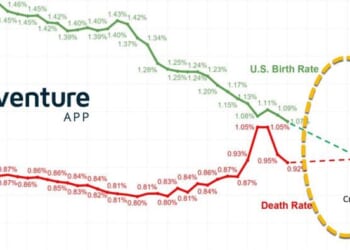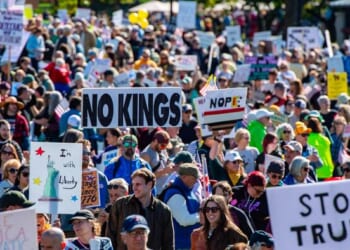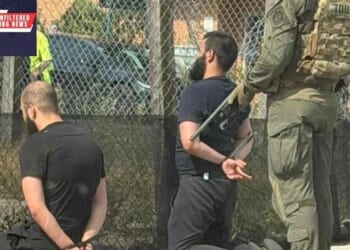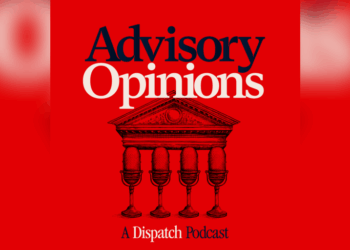
“Big book, big evil,” famously quipped the third-century B.C. poet Callimachus, expressing the sentiment of many a modern reader—and many a modern publisher. The novelist Mark Z. Danielewski disagrees. In 2000, he made his literary debut with the 700-page novel House of Leaves. He has been writing (relatively) shorter fare since then, but now he’s back with the 1,228-page novel, Tom’s Crossing.
Rated No. 1 on Amazon in the category of “Men’s Adventure Fiction” at the time of this writing, the novel’s appeal to readers is encouraging news for American literacy, a remarkable sed contra moment to throw in the face of all the bad news about the kids—and adults—who just don’t read anymore. Men’s reading habits have particularly come under scrutiny. “Why Did the Novel-Reading Man Disappear?” the New York Times asked with alarm earlier this year. Perhaps Danielewski would quip back: When offered books that actually appeal to them, readers will read. Even if the books are potentially toe-crushingly big. Sorry, Callimachus.
Imagine Homer’s Iliad, but set in the mountains of Utah in 1982, with horses at the center of the conflict. The epic tale that is Tom’s Crossing begins with an unlikely friendship between two teenagers—Tom, the scion of the privileged Gatestone family in the fictional city of Orvop (the rearranged letters of Provo), and Kalin, the mysterious new kid in town, the only son of a single mom who can barely make ends meet and clearly has a troubled past. The two boys bond over their shared love of two horses that belong to Orwin Porch, a domineering patriarch whose wife had fled with their daughter some time ago, leaving him to raise and manage a large brood of sons. For months the two horses, whom the boys name Navidad and Mouse, stay in Paddock A, grazing freely, available for the boys to come visit and ride for fun, not bothering about such details as permission of the owner. The only concern is the nearby Paddock B—introduced from the get-go as the paddock for all the horses Porch is planning to butcher.
Just 38 pages into the novel, Tom tragically and suddenly dies of cancer. On his deathbed, he makes Kalin swear an oath to protect the horses: “You take em to the Crossin, Tom managed to say, and you set our friends free. Swear.” The plan is set. Should Old Porch ever move them to Paddock B, Kalin must rescue them and take them to Tom’s Crossing—a place of freedom known only to Tom, located somewhere at the very top of the mountain next to the city.
When soon after Tom’s death Kalin discovers the horses have been moved to Paddock B, he packs supplies and begins the odyssey out of town and up the mountain. Russel Porch, one of Old Porch’s sons, discovers that the horses are missing, however, shortly after Kalin has removed them from Paddock B. He takes along a gun and pursues Kalin with the aim of getting back the horses—and winning his father’s favor. When Russel confronts Kalin that first evening of his quest, however, a mysterious defender emerges from the dark woods and ably disarms Russel: Landry Gatestone, Tom’s younger sister, who had found out about the horses and took it upon herself to help Kalin on his mission. The scene ends with the three teens sitting around the campfire, sharing rice and beans and hot cocoa, while Landry pays Russel for the horses, thus resolving the problem. The horses no longer belong to Old Porch, as far as she’s concerned, so the trouble is over—although Kalin still needs to take them up to Tom’s Crossing to set them free.
Of course, things do not work out so simply. Returning with the money but without the horses, Russel is taunted for his perceived cowardice by his brothers and father. In a drunken rage, Old Porch accidentally kills Russel in front of his other sons. To cover up the murder, the Porches blame Kalin and Landry, setting off a police manhunt in the mountains, along with the Porches’ own pursuit of the teens. The rest of the novel will track these events before reaching a dramatic resolution.
The omniscient narrator blends fictional oral histories, descriptions of art based on the episodes of the events in the novel (imagining the events as real and as inspiring art after the fact), and various archival documents in reference to the events described. Early in the book this narrator reflects: “Some say the universe bends toward Justice, but when it don’t, stories mend the trajectory.” Yes, this book is about a set of events, and how cruelty and violence begets more of the same. But as the mix of different renditions of these events from different perspectives repeatedly remind us, the stories we tell matter a great deal. What actually happened is important; truth is important. But the stories we tell reflect a certain truth, if not of the events, then of the narrators themselves. This matters too.
What makes an event worthy of an epic? Danielewski earnestly wonders about this question—and his characters go along with him. In describing the murder of Russel, just 126 pages into the book, the narrator says, “Here too, Mr. Caracy Rudder, a composition teacher at Orvop High, would say without explanation, is our Echepolos. What Ms. Meredith Melson, Orvop High’s AP English teacher, had no trouble followin, though she begged to differ: Rather, Russel Porch is our Elephenor; Echepolos bein the first warrior to die in the war on Troy and a Trojan, with Elephenor bein the second to die and the first Greek, if we’re foolish enuf to not count Iphigenia.”
Danielewski is not subtle with his epic references to Homer, and some to Virgil, too. Quoting reports from fictional teachers and various academics in Orvop and around the country, he sets a tone that imitates academic research reports—except the spelling, as the above quotation shows, is jarringly casual, suggesting that the omniscient narrator (with initials E.L.M. on the title page) is no less approachable for being so well-informed. A reader who pays attention, by the way, should be able to figure out the identity of E.L.M. before it is confirmed at the end of the book.
At times, reading Tom’s Crossing feels like Moby Dick, but with horses in lieu of whales. There are (literally) hundreds of pages that simply describe horses—their thoughts, appearance, feelings, previous stories, and of course, the manner of their ascent up the mountain paths. The selflessness of the horses and of their rescuers—Kalin and Landry—is in constant contrast to the evil plots of the Porches to destroy them. But epics, of course, are hardly this simplistic. This is not just a tale of good versus evil, and the victory of good over evil is not guaranteed. Outside observers’ comments throughout remind as much: “Look, there ain’t no point lookin for some stand-in for the Trojan horse. The horses are real. They hide nothing, they devise nothing, they mimic nothing. They live, they strive, they are.”
But then, isn’t this the point of adventure fiction? To remind us, even while we are seated on living room chairs rather than perching on freezing mountain precipices, that people too, no less than horses—we live, we strive, we are.
















